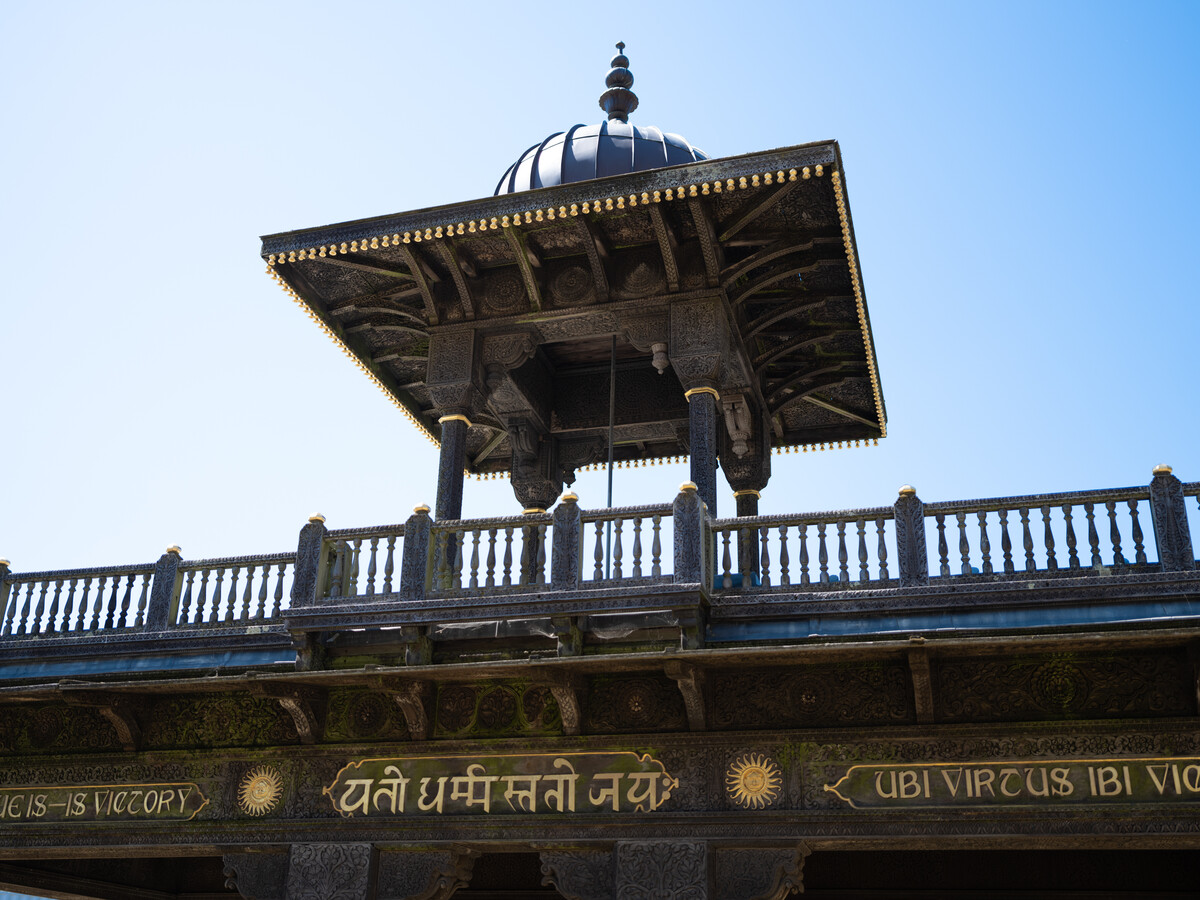
Jaipur Gate

Donated to Hove Museum in 1926, the Jaipur Gate combines English design with Indian culture and craftsmanship.
The Jaipur Gate, in the grounds of Hove Museum, was originally commissioned in 1886 for the Colonial and Indian Exhibition held in South Kensington. It marked the entry to the Rajputana (now Rajasthan) section of the exhibition. The exhibition was opened on 4 May 1886 by Queen Victoria, and attracted 5.5 million visitors.
Fanfares for deities and rulers
The Gate is a reproduction of a drum platform from which fanfares were sounded for deities and rulers. Designed by two Englishmen – Colonel Samuel Swinton Jacob and Surgeon-Major Thomas Holbein Hendley – it was carved and assembled by Indian craftsmen. The Maharaja of Jaipur paid for its construction, and the inscription on the front, written in English, Sanskrit and Latin, is the motto of the Maharajas of Jaipur: ‘Where virtue is, there is victory.’
Donated to Hove Museum in 1926, the Gate formed the backdrop to the visit of a later Maharaja of Jaipur, who visited Hove in 1986 to mark India’s independence celebrations.
Indian connections
This is one of a number of monuments in Brighton & Hove with an Indian connection. The Royal Pavilion was one of several buildings used for the care and convalescence of wounded Indian soldiers during the First World War, while the Chattri Memorial marks the cremation site of the Sikh and Hindu soldiers who died here as a result of their injuries. And the Indian Memorial Gateway to the Royal Pavilion Gardens, unlocked in 1921 by the Maharaja of Patiala, was a gesture of thanks dedicated to the people of Brighton & Hove from the people of India.